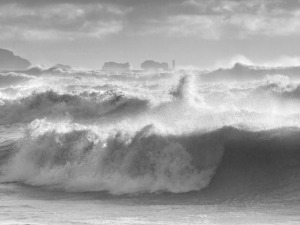
Painting by Martin Battye FRSA, and my own inept reflection!
This week has been about catching my tail.
You know those moments where you come out of a period of frantic activity and realise that the house is a tip, and so is your head? Suddenly you find yourself coming in to land in what you think is home, but which turns out to feel like a strangely alien place.
So I’ve been sitting still. Listening to the birds outside the window. Doing self-care things, like going to therapy appointments, meditating, remembering how to do the down dog asana (though in my, case, very badly), journaling, and indulging my muse.
I took myself off on an artist date. Not to a gallery or the movies. I went for an hour-long wallow at the library. I love our library. Its huge. I always feel like I’m in a sweetie shop with an unlimited budget. Sometimes I go in there, and I can’t see anything I want to bring home. Other times, such as this one, there are so many books I want to take home and cuddle that I just can’t decide. Well, you can only read so many words in the three week loan period, and I figure the ones I like will pop up again soon enough. I came home with six, including two art books which I hope will help me to get drawing again.
The choice of art books was partly prompted by a dear friend, Martin Battye, painter and raconteur, Fellow of the Royal Academy and my husband’s cricket club. He lent me a few of his old sketch books a while ago, as I wanted to write a blog post about his creative process, thinking his images might inspire you, dear reader, as much as they do me. Then Life happened, and the sketchbooks stayed patiently waiting on my desk in a plastic carrier bag for the time when Life would get out of the way, and I would remember I had a blog! This week, Martin needed his sketch books back, and I felt awful, of course, for neglecting my promise to him, and his kindness in lending me his treasure trove. I looked through the pages and was once more dazzled by the obvious fact his work illustrates:
It’s a sketch book. That means it is a work place. A place to try things out. You don’t have to get it perfect every time. Or, as artist and illustrator Cliff Wright puts it so brilliantly:
‘Drawing is a great medium for experimentation because nothing is set in stone – you can always do another drawing if you don’t like the first one.’
Cliff Wright, The Magic of Drawing: Bring your Vision to Life on the Page, David & Charles Ltd 2008
This has been a revelation to me, a victim of perfectionism all my life. Even as a kid, I struggled with the idea that I could make a mess and get it wrong and practice till I was happy with the end result. Somewhere along the line, the idea of playing, and of practicing something to get the hang of it, got lost. It had to be perfect first time. Which is, I suppose, why I eventually stopped making art altogether.
Martin’s sketchbooks, the sketchbooks of a man I think of as a ‘proper’ artist, show that making rough sketches, making a mess, scrabbling about to find the right line, are what sketchbooks are all about. Which makes it alright for me to do the same, somehow.
I’m grateful to Martin for his support and generosity in sharing his work with me, and I’m looking forward to sharing some of the precious images from his sketchbooks with you soon. In the meantime I’m taking this crucial revelation about perfectionism into the coming days, hoping it will sink in permanently this time, and allow me to try stuff out, experiment, get it wrong. Because that is how you learn.
Happy Creating,
EF












